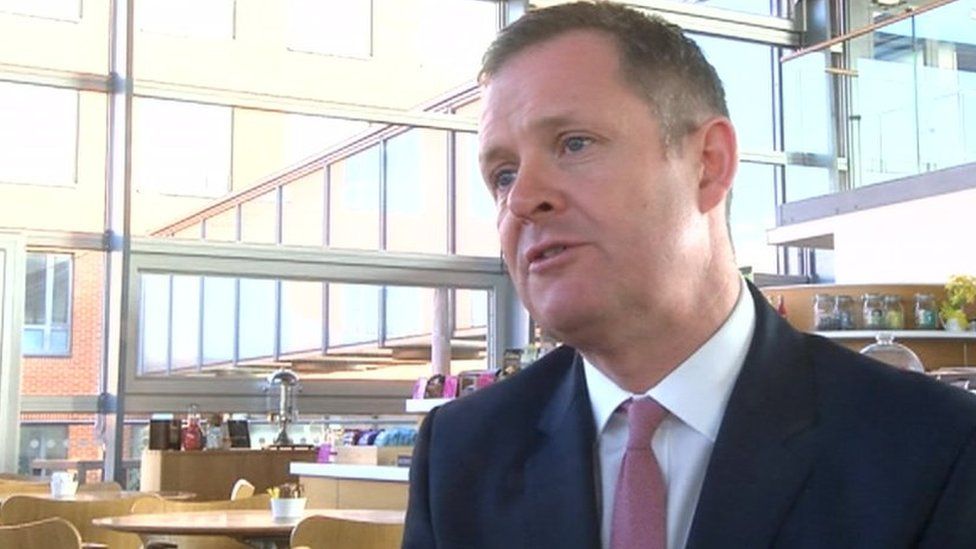
A citizenship oath written in Welsh has been criticised for an error asking people to literally curse at God.
Wales' education minister Jeremy Miles says he will write to the UK government to remind them to use the language accurately.
It comes after an emergency mobile text alert in Welsh used a made-up word.
The Home Office, which produced the oath of allegiance, said it recognises the "importance" of correct translation.
People taking part in a citizenship ceremony have to give either the oath or the affirmation of allegiance to the King, as well as a pledge of loyalty to the UK.
A Home Office website, which is still live and has not been corrected, gives the English version of the oath of allegiance as: "I, (name), swear by Almighty God that, on becoming a British citizen, I will be faithful and bear true allegiance to His Majesty King Charles III, His Heirs and Successors, according to law."
But in Welsh it uses the term "rhegi", which means to curse. The Welsh for a vow is "tyngu".
It also uses the word "omnipotent" - which is not a Welsh word - as a translation of "almighty", instead of the Welsh "hollalluog".

The alternative affirmation of allegiance in Welsh includes mutations that should only be used for a female monarch.
Mutations are ways in which words change according to context.
There is also a grammatical error in translating "freedoms" in the Welsh pledge.
Last month, a translation blunder that saw a Slovenian ski resort mentioned in the Welsh version of the emergency alert test was blamed on autocorrect.
For the Welsh for "others safe", the test message read "eraill yn Vogel" instead of "eraill yn ddiogel".
'Status of the Welsh language'
Earlier this week Plaid Cymru MS Llyr Gruffydd told the Senedd while mistranslations or spelling errors can be amusing at first sight "they do send a very unfortunate message in terms of the status of the Welsh language, when we see these examples being tolerated far too often".
He called on the education minister to write to public sector bodies in Wales, and to the UK government, "to encourage them and to remind them of their responsibilities in this regard".
Mr Miles replied that he is "very happy to do that", adding "if there was less emphasis on complaining about renaming Bannau Brycheiniog, and more emphasis on accuracy, we might all be happier".
Rishi Sunak said last week he will keep using the English name Brecon Beacons, which the national park has dropped.

Mr Miles said that the Welsh government facilitates Welsh language accuracy "through funding resources such as Welsh language spell-checkers and grammar checkers".
The Home Office said: "We recognise that a correct translation of the citizenship oath and pledge on gov.uk is important to reflect the significance of becoming a British citizen."
- E-mail error ends up on road sign
- Autocorrect blamed for emergency alert Welsh gaffe
- Gun salute in Wales as Charles proclaimed king
Manon Cadwaladr, chair of Cymdeithas Cyfieithwyr Cymru, the Association of Welsh Translators, said: "More and more people are using translation machines and we recognize that the quality of those machines is gradually improving.
"Nevertheless, good and accurate translation is specialist work. It is a craft. It requires specific skills, as well as experience".
She added that "to translate correctly into Welsh requires a real understanding of our language, our culture and the audience".
Related Topics
- Home Office
- Welsh language
- Welsh government
- King Charles III





COMMents